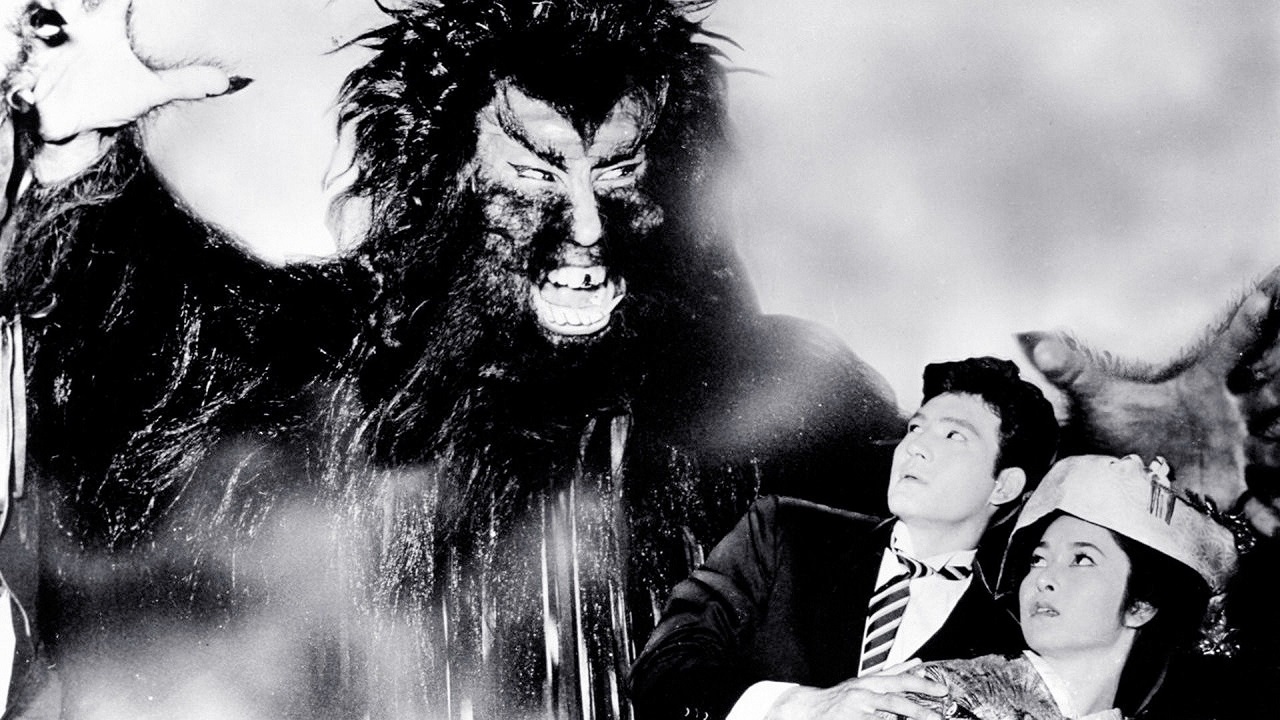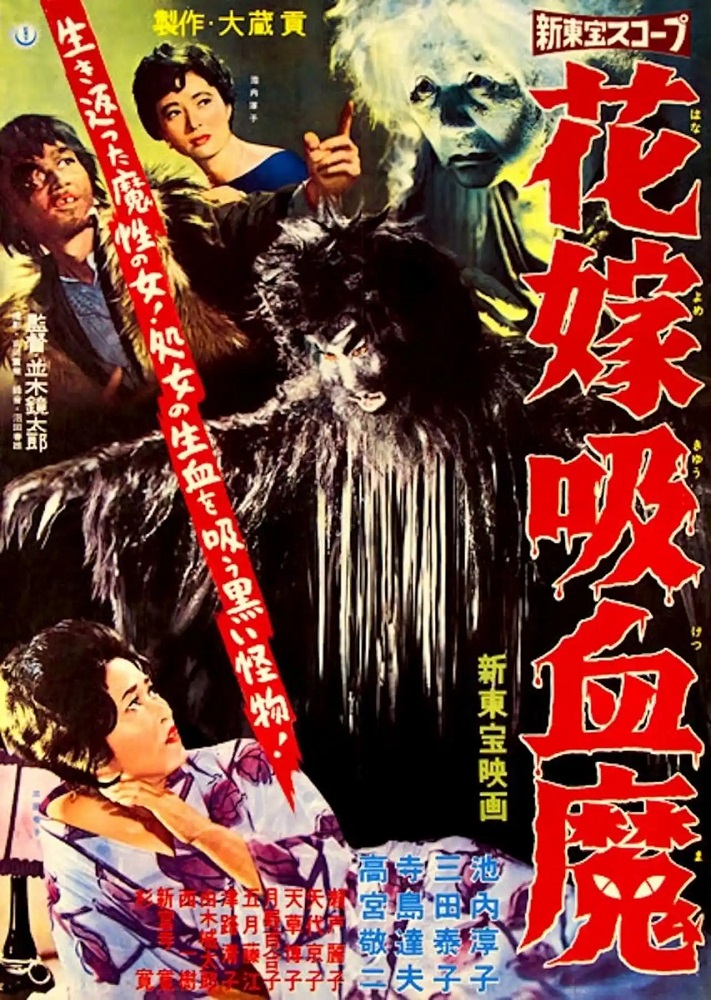(Hanayome Kyuketsuma)
Crew
Director – Kyotaro Namiki. Production Company – Shintoho.
Cast
Junko Ikeuchi (Fujiko Shirai), Hiroko Amakusa, Reiko Seto, Yasuko Mita, Keiji Takamiya
Plot
The ballet student Fujiko Shirai obtains the prestigious position as the lead actress for Kyokko Films. Fujiko’s mother is happy, as this will mean she can afford proper medical treatment. However, the other actresses at the studio feel jealous. While out on a picnic, they conspire to push Fujiko over the cliff. She survives but with one eye badly scarred. She returns from the hospital to find that her mother has committed suicide rather than be a burden to her. She has left a note, suggesting that Fujiko go to find her only living relative in the countryside. Fujiko sets out, despite warnings from the locals, and meets the old woman who is a hideous witch. The old woman says she can heal Fujioka’s disfigurement and conducts a ceremony. However, when Fujioka wakes up and finds she is still disfigured, she stabs herself. The old woman gives her life to revive Fujioka and she wakes to find herself completely healed. Soon after, Kyokko Films is visited by a new actress Sayoko Kageyama who bears an uncanny resemblance to Fujioka. At the same time, a hairy vampire creature appears and begins to kill each of those responsible for Fujioka’s disfigurement.
Vampire Bride is a ghost story from the Japanese exploitation company Shintoho that operated between 1949 and 1961. A spinoff of Toho Films, Shintoho specialised in lurid thrillers where there came to be an increasing emphasis on erotic elements and where each film was sold with a sensationalistic poster. Shintoho was also prolific in the new genre of the kaidan eiga (ghost story film) that emerged during this era and made a number of efforts in this vein.
Vampire Bride is a real oddity as the kaidan eiga being made by Shintoho and others of this era go. While these were ghost stories, this involves a more physical creature. That said, it seems a misnomer to call Vampire Bride a vampire film. I am unable to ascertain if this is something that was slapped on the film by the English-language distributor wanting to jump on the popularity of vampire movies or whether it is the nearest equivalent of something quite different in Japanese.
Certainly, the creature that we see on screen doesn’t have much in common with a vampire – it is seen, it is implied, drinking a victim’s blood upon only one occasion. Mostly, it is a hairy winged creature that changes back and forth between being a regular woman and seems driven by vengeance. In other words, in its actions the vampire is more akin to one of the avenging ghosts of the kaidan eiga come to take retribution against those who committed some sin against the dead person, than it is a vampire, which is usually driven by a need to devour blood to stay alive. It is perfectly possible that the film was influenced by the previous Shintoho film Lady Vampire (1959), which crossed many of these same themes.

The first half of the film is incredibly dull, centred around the various dramas and rivalries at the film studio and the appointment of the new leading lady Junko Ikeuchi. Unlike most of the other Shintoho films of this period, Vampire Bride is shot in black-and-white. And unlike other kaidan eiga of the period – good examples might be Ugetsu Monogatari (1953), Oni Baba (1964) and Kuroneko (1968) – the black-and-white shooting is shabbily conducted and fails to add up to something atmospheric. In terms of acting and visuals, it feels exactly like one is watching an old tv soap opera.
Vampire Bride does gain some effect when it arrives the witch’s home in the countryside. She is given an undeniably hideous appearance – not to mention a house that with rather absurd effect has bubbling pools of steam in the midst – all of which proves entertainingly lurid. The film becomes even more appealingly absurd when it gets to the scenes of the vampire bride taking vengeance against the girls who disfigured her. The film attains something amusing in the scenes where Junko Ikeuchi starts giving evil looks before we get a series of lap dissolves where she transforms into a hair-covered beast creature. None of this is particularly convincing – the bats fly about on obvious wires and it is more funny than frightening watching the vampire bride creature conducting her odd slow-motion dance as she stalks victims.
The film has a peculiar real-life mirroring. The program notes for the Shintoho retrospective tell how lead actress Junko Ikeuchi had displeased the Shintoho studio boss by marrying a man he did not approve of (which in turn had ended badly). As punishment, he responded by casting her as a hideous beast at exact opposite remove from the nice girl roles she had been used to. This bleeds through into the story, which is almost like a horrible wish fulfilment fantasy come true – of how the sweet innocent girl at the film studio is disfigured and dethroned by the other actresses out of jealousy and stabs herself before returning to life as a hideous and vengeful figure of evil.


